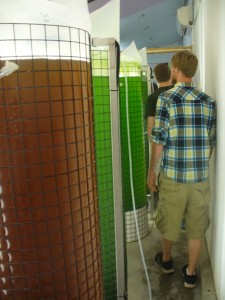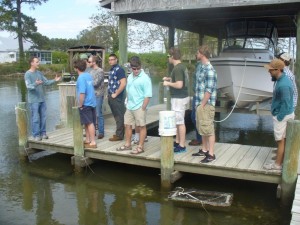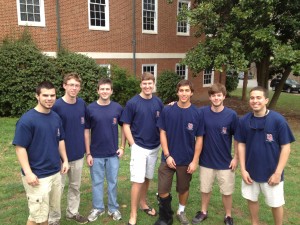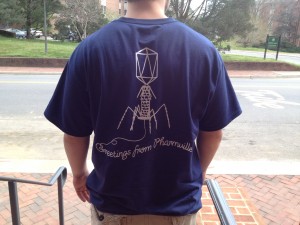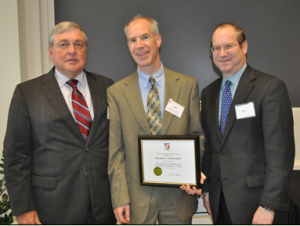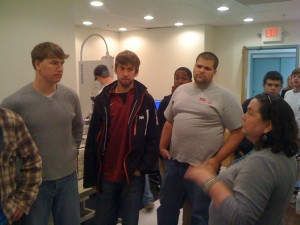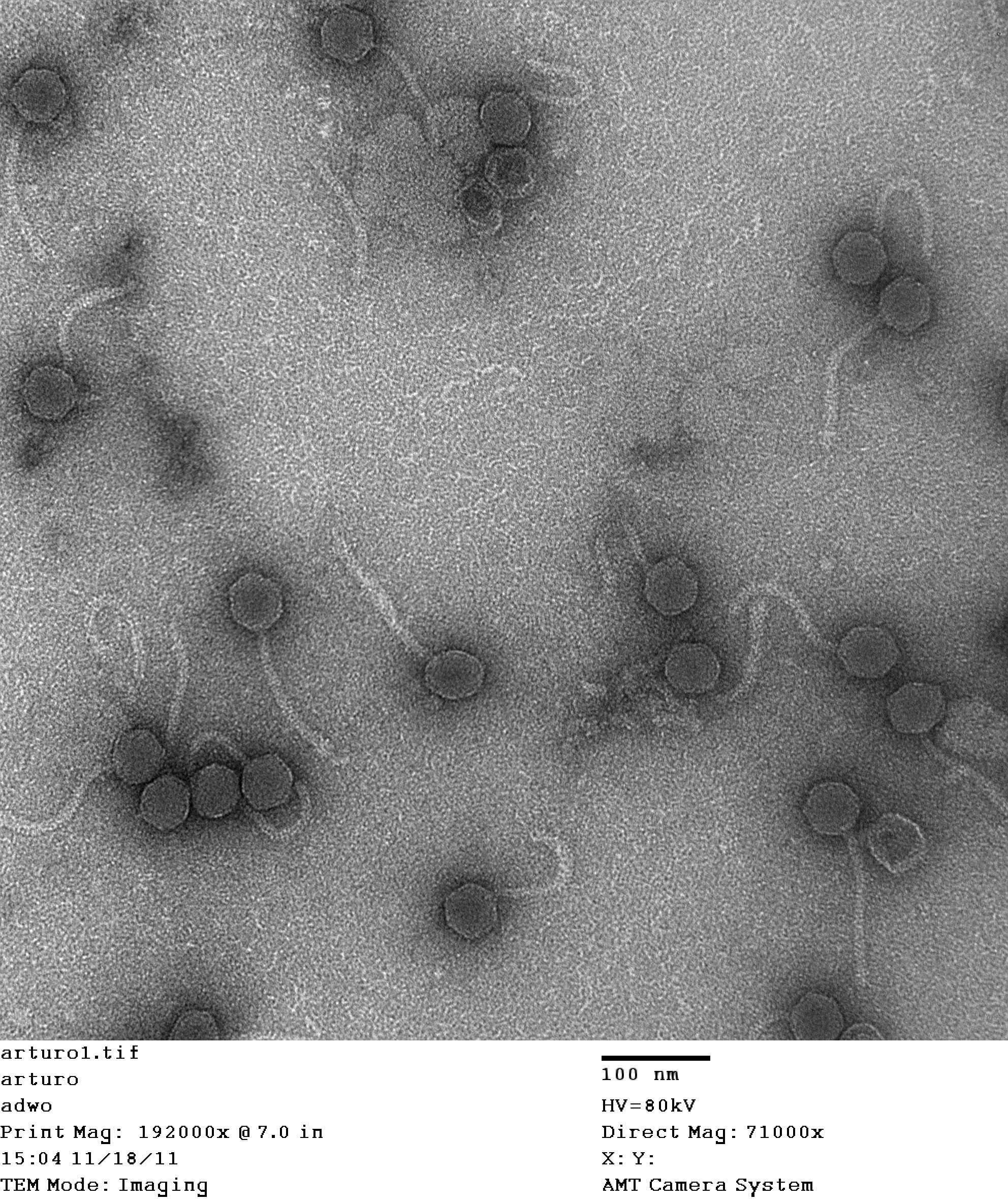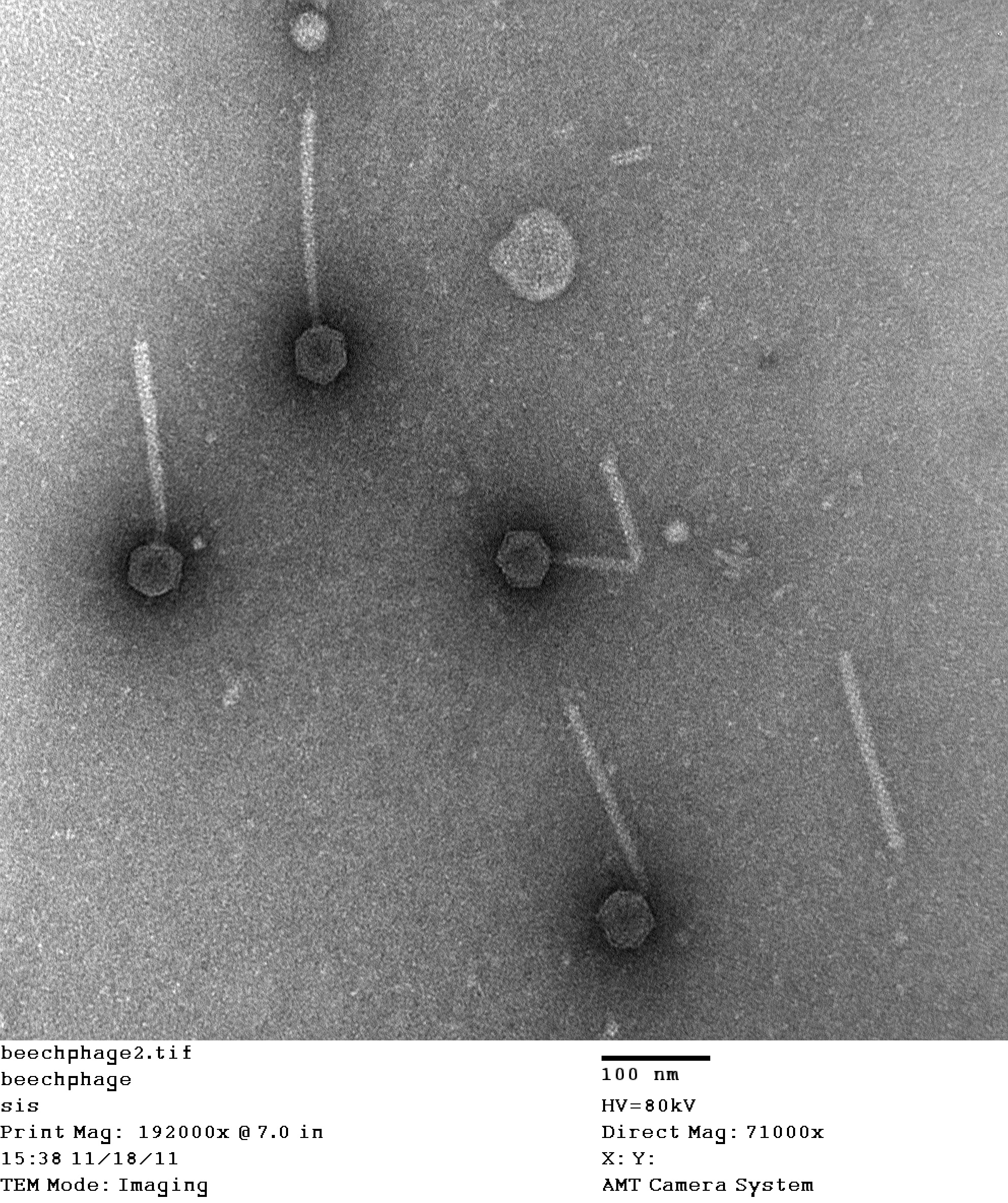Professor Werth’s Biology 343 Marine Biology class took a trip to Gwynn’s Island, Virginia, for a tour of an oyster hatchery. Hampden-Sydney alumnus Rick Godsey ’85 met the students at the Oyster Seed Holdings facility (http://www.oysterseedholdings.com/) and, along with hatchery manager Michael Cosgrove, led the group on a tour of the operation, showing how water is taken from the bay and purified to remove all particulates, warmed or cooled (with a countercurrent exchanger) to a precise temperature, and then seeded with cultured oyster larvae that settle on finely ground shells. The facility raises mainly triploid oysters, which (because they are sterile) put their energy toward bodily growth rather than reproduction.
Perhaps the most interesting and remarkable part of the tour was the production of “clean” algae bred and produced solely to feed the young oysters. Four species of diverse algae are grown under precisely controlled conditions to ensure the health and rapid growth of the oysters. A full time algologist controls this portion of the hatchery, and many tanks are used to grow large populations of the algae.
The tour group also saw adult oyster brood stock that are used to breed new oysters year-round (by tricking them via water temperature), observed microscopic larvae and dissected adults, and were led through all aspects of the oyster life cycle and the hatchery operation, including sorting and cleaning for sale (at 1 or 2 mm size). Buyers then grow the oysters to market size.
After the hatchery tour the group went to Rick Godsey’s nearby waterfront home to see how he raises adult oysters, in cages hanging off his dock, in the later stages of the aquaculture process. Mr. Godsey graciously explained how his setup works and also shared fresh oysters with the students, who were glad to partake of this fresh treat. Another batch of oysters was brought back to Hampden-Sydney for further study and dissection.

